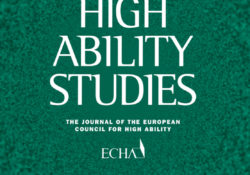eric.ed.gov har udgivet: Following the recommendations of a 2013 instructional audit, the Academically or Intellectually Gifted department implemented a co-teaching instructional strategy in 41 volunteer schools starting in the 2014-15 school year. Implementation data and discussions with central office staff suggest that while implementation fidelity was relatively strong in the first year, it declined in 2015-16. Still, the first year of implementation offered evidence to guide any future co-teaching implementation. First, the “one teach, one assist” method of co-teaching was most frequently observed, suggesting that co-teachers may have defaulted to one of the less optimal instructional strategies under the model. Second, AIG teachers and co-teachers perceived the initiative similarly but differed on a few particularly meaningful survey items pertaining to the perceptions and role of the specialist. Third, AIG students… Continue Reading →
Like this:
Like Loading...
tandfonline.com har udgivet en rapport under søgningen “Teacher Education Mathematics”: How do included and excluded students with SEBD function socially and academically after 1,5 year of special education services? Link til kilde
Like this:
Like Loading...

tandfonline.com har udgivet en rapport under søgningen “Teacher Education Mathematics”: Abstract Abstract There are two competing stereotypes of gifted students: harmony theory (gifted students are well adjusted and successful in life) and disharmony theory (giftedness forms a threat to a harmonious development). In this context, the PISA 2012 data were used to explore middle-school students’ experiences in terms of sense of belonging, student–teacher relations and attitudes toward school concerning learning activities/outcomes. Fifteen-year-old students from 13 European countries were selected for this data-set (normative = 79,550, gifted = 1956). Student’s scores on the four scales were tested for significant differences with students from that same country. Tests revealed no significant differences for 55% of the comparisons, 40% of comparisons had positive effect sizes for gifted students, and 4% had negative effect sizes. The evidence presented… Continue Reading →
Like this:
Like Loading...

